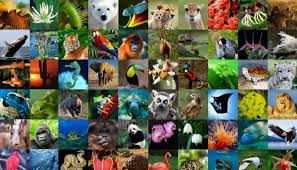World Wildlife Trade Report
The first-ever World Wildlife Trade Report was released at the 19th Conference of Parties to CITES, which is being held in Panama from November 14 to 25 this year. This conference is the fourth such meeting to be held in Central and South America and the Caribbean since the CITES came into force in 1975. It is the first COP to CITES to be held in the region since 2002.
What is World Wildlife Trade Report?
The World Wildlife Trade Report provides insights and assessment of the global trade of animals and plants that are regulated by CITES (Convention on International Trade in Endangered Species of Wild Fauna and Flora). The CITES ensures the regulation of the international trade of wild animals and plants so that their survival is not threatened.
What are the key findings of the report?
- Some 3.5 million CITES shipments were reported in direct trade by exports between 2011 and 2020. This accounts for 1.3 billion individual organisms and 279 million kg of products reported by weight.
- Asia and Europe are the top exporters and importers of wildlife trade. Asia accounted for 37 per cent of export transactions and 31 per cent of import transactions.
- Asia and Africa account for the highest proportion of the global export value.
- The annual revenue generated by the global legal trade in wildlife (CITES and non-CITES) is around 220 billion USD.
- The direct exports of CITES-listed species were valued at $1.8 billion for animal exports and $9.3 billion for plant exports.
- Across all animal commodities, the export of reptiles and fish accounted for over 72 per cent of the average annual value of global CITES-listed exports.
- Across all plant commodities, timber exports accounted for 66 per cent of the estimated value of global CITES-listed exports. Non-timber exports accounted for the remaining 34 per cent of the global exports by value.
- Well-managed trade of CITES-listed species ensures an increase in the species’ population, improved maintenance and reduced pressure on the wildlife population.
- It also provided socio-economic benefits like GDP growth, income generation, improved nutrition, etc.
Month: Current Affairs – November, 2022
Category: Reports & Indexes Current Affairs


